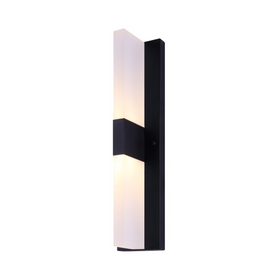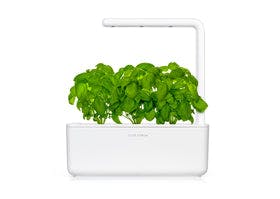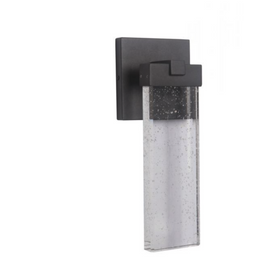
Growing a Garden: Harvesting
Last Updated: Apr 13, 2025Knowing the right time to harvest can be challenging. How do the rabbits always seem to beat the humans to the punch? Maybe they know something we don't?
There's plenty to consider when checking if a food is ready for harvest or if it needs to stay on the vine longer. Today, let's look into the ripening process for fruits and vegetables and some tips and tricks to consider when gearing up to harvest.
What is Ripening?
We have all most likely shared an experience where we bite into a piece of fruit and expect the sweet flavor we know all too well. It's when we're overwhelmed with a bitter taste that we collectively mutter, "That's not ripe." But what is ripening, and why is it important?
Ripening occurs in fruits and is a process of maturation and reproduction. When unripe, the fruits are full of alkaloids and tannins, which gives them their bitter taste. But these agents are there to help the fruit grow and develop. The bitterness we taste when biting into an unripe fruit is the plant telling us the seeds inside are not ready to be planted. The naturally occurring stimulants and biomolecules help the plant fight off potential early harvest as well as infections.
These sharp defenses and sweet rewards are to help the plant to spread its seed through animals successfully. The ripe fruit is a flavorful one because the starches and acids in the plant have begun to give way to increased sugar content. The texture starts to soften, making it easier for potential consumers to get to the seeds. In nature, wildlife would feast on the fruits, fly or walk off, and leave nutrient-rich droppings laden with seeds wherever they go.
These fruits are how a plant spreads its genetics and secures its survival. The more attractive its fruit, the more likely it will produce more. Our plants anticipate that we will also distribute its seed after eating. This quality is why many plants, like tomatoes and beans, continue to put on new flowers after harvest.
Table of Contents
- When Are Plants Ready for Harvest?
- What are Some Harvesting Strategies?
- Preserving Your Extra Produce
- Additional Tips for Harvesting Your Garden
- What About Our Tomato Example?

When Are Plants Ready for Harvest?
Knowing when something is ready for harvest is determined on a plant-by-plant basis. Like everything else gardening, there is no real universal guide for when your food is mature enough to be consumed. Aside from plucking fruit or vegetable and giving it a taste test, you're going to need to research each of your plants individually.
Here are a few commonly considered factors that go into determining when something is ready for harvest.

Height of Crop
Some plants are ready for harvest when reaching a certain height. One great example of this is asparagus, which has an optimal harvest height of six inches. For plants like this, if you fail to harvest at a set height, you run the risk of losing the crop. After a certain point, the asparagus spears move past its tender state and begin to fern out, becoming woody and inedible.
Several cut-and-come-again lettuce varieties also taste better when harvested after a certain height. By collecting while the leaves are small, you are pushing the plant back into production, allowing you to have multiple harvests. And, it doesn't just have to be lettuce. Kale and collard greens are also best when harvested at a specific size. Even your herbs can also benefit from this harvesting, with basil performing better with regular clippings.

Size of Plants
Some plants have a size window in which they are tender and optimal for consumption. A classic example is that of beets. The beetroot tastes best when between the size of a golf ball and a tennis ball. As the beet matures that sweetness changes into a tough to chew, woody root.
Various brassicas, like Brussel sprouts and kohlrabi, also can be harvested when they reach a specific size. Brussel sprouts are typically ready for harvest when they are an inch in diameter. Kohlrabi is best harvested when the swollen stem reached three inches in diameter. Anything beyond that and the vegetables begin to taste unpleasant.
Color of Fruits and Vegetables
Numerous fruits and vegetables inform us of ripeness through a noticeable change in color. We've all walked around the produce aisle and stared at the reds, oranges, and yellows of our food. There are many color differences in our natural crops, which is useful to humans whose primary method of navigating this world is sight.
For example, consider the tomato. As the fruit begins to form, it is usually a shade or two of green. Maturing, it reaches full color, changing into red, yellow, or even purple. At that point, a gentle tug on the fruit would detach it from the vine.
Peppers also change colors, often from green to red, but they also have another tell. As you watch your peppers mature, you'll notice the older ones begin to put on a glossy sheen. This new "coat" will make your peppers seem waxy, signifying that they are near ready for harvest. So if you want a green pepper and aren't sure if it's mature, check to see if that gloss is present.
Plant Cues for Ripeness
As we saw with color, ultimately, your plant will give you cues about its maturity. Corn, for example, will begin to let you know weeks before it is ready. Long, fibrous tassels erupt from the husks roughly three weeks before maturity and are usually a white-green hue. When the silks begin to change to a brown color, you know it's almost time to harvest.
But the process doesn't stop there for corn. The plant will also display changes in the cob itself. As you're ready to harvest, you can puncture a kernel on the corn in question, and see if liquid emerges. Milky fluid means the cob is ready to collect, while clear means you're too early, and if the kernel is dry, it means you're too late.

What are Some Harvesting Strategies?
We now know that every plant will give you some sort of sign that it is ready for harvest. Now it is up to you to fulfill your natural duty and eat that food. Here are some harvesting strategies that the Farmer's Almanac recommended. I found that they helped me make the most of my garden harvest.
Fruit and Vegetable Size Guidelines for Harvesting
We've already mentioned size for determining the maturity of a fruit or vegetable. What we found is that in some varieties, a smaller fruit or vegetable is more flavorful. Beets, summer squash, and various brassicas are a few plants that are more flavorful within a size-range. You don't want to spend a summer's worth of time and effort in your garden, only to be chewing on a wood flavored vegetable.
Some plants do have a typical size that they reach. For example, most sweet peppers will be roughly the size of a baseball when they are ready to be harvested. Knowing the average size of what you're producing will help you anticipate when a crop is ready.
Plant Differences When Harvesting
Different varieties will have different harvesting methods. As we have seen since we started with seeds, no two plants are identical. They will have different growing and harvesting strategies, and it is essential to know how to handle your plants.
Consider the difference between the tomato and the watermelon. Tomatoes can be purchased on the vine because even after harvest, the fruit continues to mature. On the other hand, watermelons do not function that way, and after the harvest, they stop developing.

Gentle Harvesting Strategies
Now, I'm guilty of not being gentle with my plants from time to time. Sometimes I believe the plant is tough enough to handle it, only to be reminded every time that a little too much zeal and I can lose an entire arm of a plant. Patience is fundamental when harvesting.
Plants are fragile, and even with ideal conditions, they still run the chance of breaking. The University of Illinois Extension mentions the potential for breakages to create openings for a disease to enter the plant. Whether it be from a weak stem, a force of nature, or our human hands, we don't want to lose productivity in our backyard grocer.
When harvesting, you'll want to firmly hold the stem in one hand and the fruit in the other. You won't need to rip it from the stem, so if it isn't giving away readily, it probably isn't ready. Though, this isn't true with all plants. Take eggplant, for example, which won't detach from the stem but needs to be clipped with a pair of garden shears.
Check for Ripeness Daily
Once your plants have started producing, it's time to be checking them daily. Producers like tomatoes will ripen at various times over the summer. Today you may have one tomato ready, the next day five, and after that two. You learn that every day's different, and your plants will keep you on your toes.
As discussed earlier, by harvesting the plant, you are encouraging it to produce more fruits or vegetables. You are telling it that it was successful in reproducing, and if it can create more, it should.
This concept of continual harvest also goes for the herbs in your herb spiral. Make sure you are pinching them back regularly to prevent them from bolting into flower.

Preserving Your Extra Produce
Finally, it's good to remember that sometimes, you may not be able to eat all the food you produce. One remedy for this is preserving your fresh vegetables. There are plenty of ways to do this, whether through pickling, fermenting, or even an old-fashioned root cellar.
Being able to prolong your harvest builds into your home a sense of food security and resilience. Planning a garden with this engrained can allow you to provide for your household over the winter months or lessen your grocery bills in the summer.
With excess produce also comes the ability to build relationships with those in the community as well. Permaculture believes in fair share and, trust me when I say, there is nothing better than giving garden-fresh veggies to friends and family. You may just inspire someone to grow a garden in their back yard!

Additional Tips for Harvesting Your Garden
Aaron Steil, with the Iowa State University Extension, has compiled excellent information on harvesting cues for multiple annual garden plants. His tips and tricks, like those for beets, below, are great to consider in your garden.
Beet Harvesting Tips
When harvesting beets, you can harvest both the roots and the greens simultaneously. If you want to take advantage of both, Steil recommends that you can collect 1/3 of the foliage without harming the beetroot. Careful, though, too much may stunt the growth of the beetroot.
Gardening & Outdoor
Shop the best high-performing gardening and outdoor products that impact your health, wealth, and the planet through their use.

Click & Grow Smart Garden 9
Click & Grow
In Stock
3 Colors

Canarm CORIN LED Black Outdoor Light
Canarm
Out of Stock

Click & Grow Smart Garden 3
Click & Grow
In Stock
3 Colors

Craftmade Aria Outdoor LED Wall Mount Light
Craftmade
In Stock
2 Colors

Canarm LOL386WH White LED Outdoor Sconce
Canarm
In Stock

Nutritower Vertical Hydroponic Indoor Garden
Nutritower
Out of Stock

Canarm FAE LED Black Outdoor Light
Canarm
In Stock

Canarm BARDO LED Black Outdoor Light
Canarm
In Stock

Canarm SINDRI LED Black Outdoor Light
Canarm
In Stock

Canarm LOKI LED Black Outdoor Light
Canarm
In Stock

Harvesting Perennial Garden Vegetables
Most sources of harvesting information will focus on common annual garden vegetables. Some of these notes may not apply if you are working with perennials like asparagus, rhubarb, and berries. Perennials usually need a few years to develop before harvest, often skipping a harvest to allow the plant to establish itself. A little more research to determine the yearly maintenance for your perennials may be required. But once these are going, you often only have to worry about harvest and minor trimming.
Your Perfect, Imperfect Harvest
I also like to remind new growers that their vegetables won't look exactly like what's in the grocery store. And that's okay and natural. I often liken grocery store produce to photoshopping because shelved fruits and vegetables are always the perfect shapes for how we envision them. We don't realize that only a small percentage of grown fruits and vegetables make it to the grocery store while the remainder goes into cans, purees, and everything else.
In nature, not every plant produces perfect fruits, so be proud of your strange shaped produce because it was grown locally by you!

It's been a long journey from seed to harvest, and it's almost complete. Eventually, we must consider how to save our seeds, so next year we can reproduce all our favorites. But for now, it is time to enjoy the product of your hard work and determination!
Tanner Sagouspe
Tanner Sagouspe has a Masters in Environmental Management and is a Permaculture Designer who promotes tackling the climate crisis at home.

